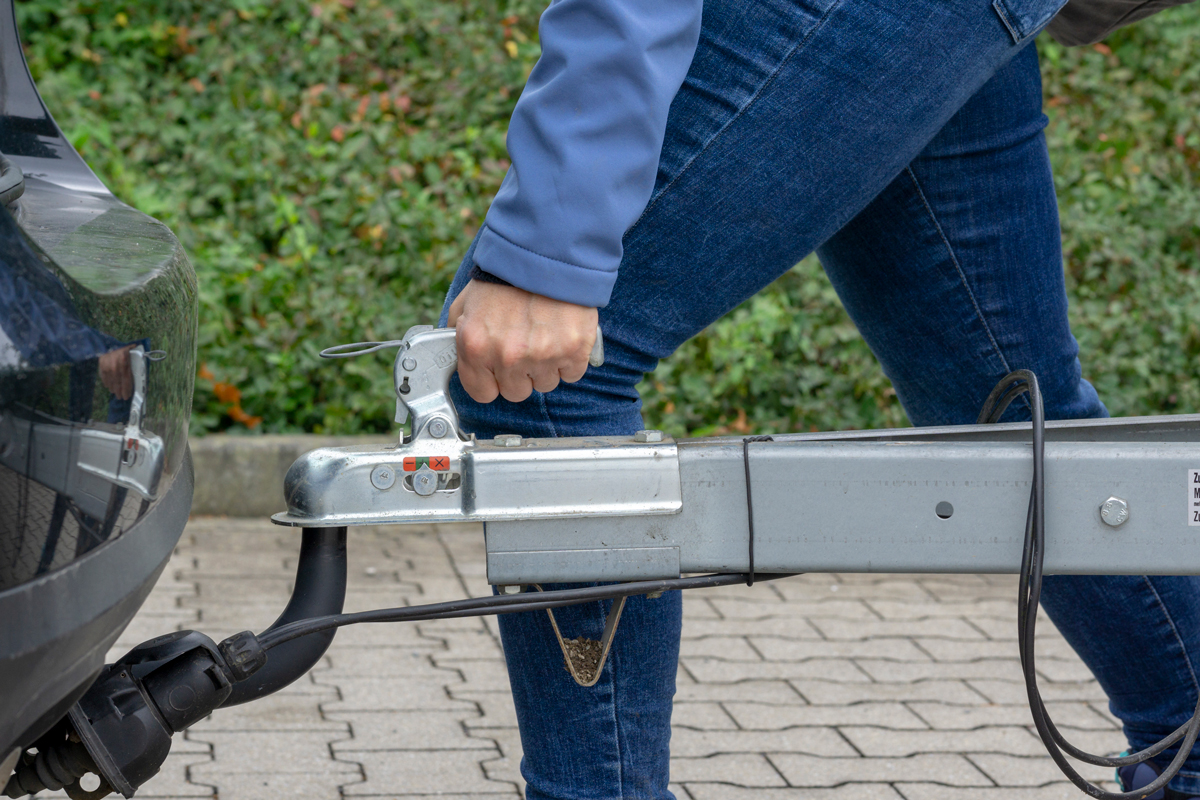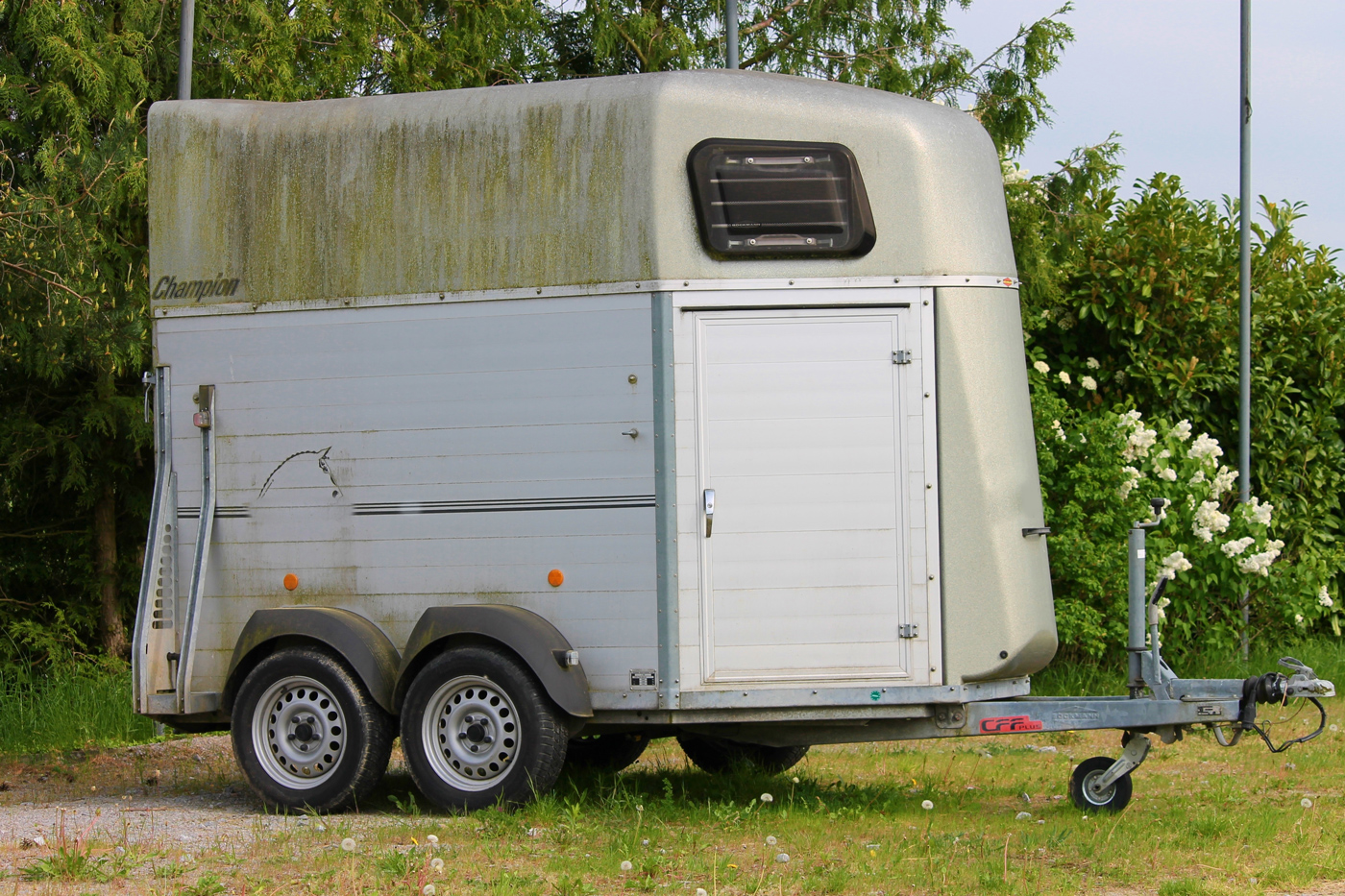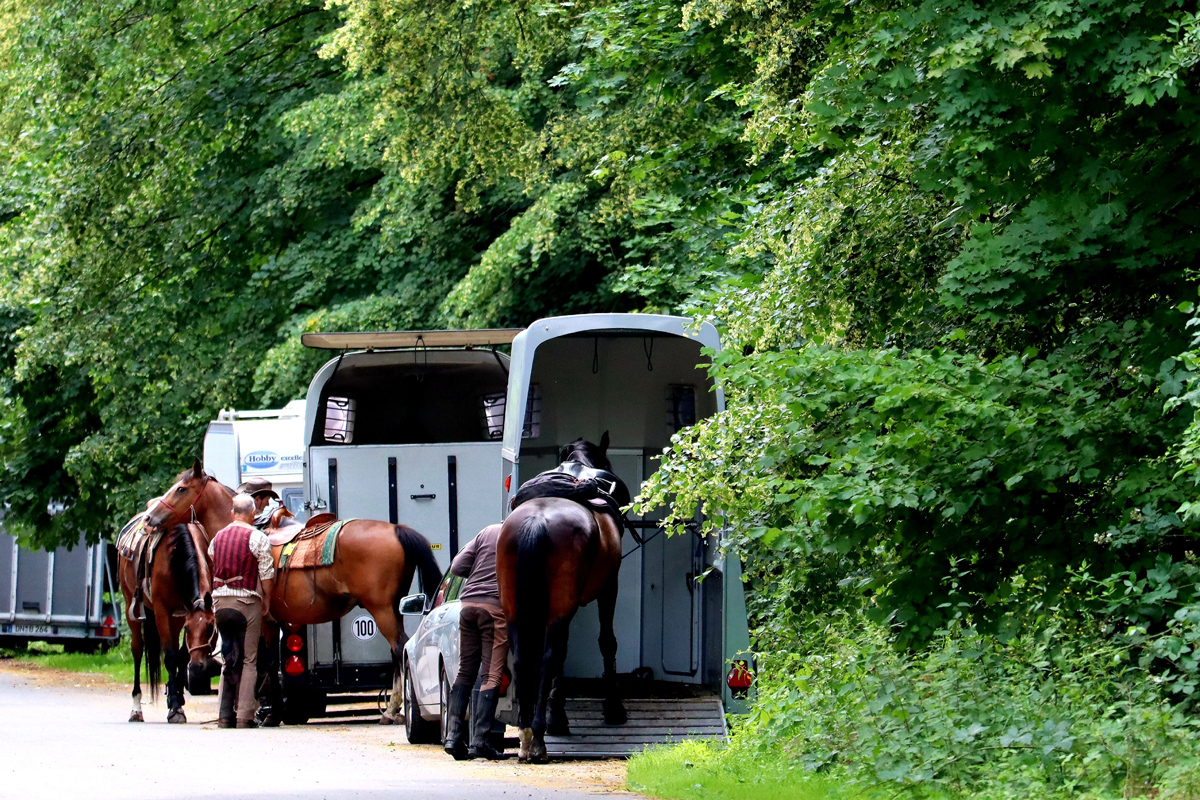Reversing a vehicle can be challenging enough without the added dimension of a horse trailer in the mix. With reduced visibility, the extra length of the trailer and the fact it moves in a different direction to the expected one, many drivers find this a nerve-wracking proposition.
Even with the best sensors money can buy, extension mirrors and perfect driving conditions, it’s still a good idea to invest in decent trailer insurance – just in case things go wrong and it all ends in tears!
But there’s no reason to be daunted, a disaster is unlikely to happen if you follow our seven top tips for reversing a horse trailer.
-
Practice makes perfect
Reversing a horse trailer safely and successfully takes plenty of time and practice.
You don’t want your first experience to be with an excitable horse on board in front of a group of strangers at a big event.
A recipe for a recurring nightmare! Instead find a safe quiet spot with lots of space where you can repeat the move to your heart’s content – without the pressure of watching eyes and a ticking clock.

-
Maintain a clear view at all times
Make sure you’ve got suitable mirrors to give you a clear view down the whole of your vehicle and trailer.
Get out and adjust mirrors if necessary, it’s always useful to have a good look round before attempting any reversing manoeuvres. Perhaps invest in a set of extension mirrors, they’ll pay for themselves in the long run.
If you’re with someone then ask them to get out and keep a watchful eye as you reverse – four eyes are always better than two.
Make sure you’ve an agreed set of signals so they can guide you and let you know when to stop.
Whatever happens, never allow them to stand between the vehicle and another solid object (such as another vehicle or brick wall).
-
Start out straight
The ability to reverse your trailer in a straight line is where you need to start. So begin by making sure your vehicle and the trailer are in a straight line.
You’ll know you’re straight when you can see equal amounts of the trailer in both mirrors. Reverse back slowly. If the trailer begins to appear more in one mirror then turn the steering wheel in that direction to straighten out.
When correcting make sure to turn slowly and wait for the trailer to respond to avoid overcompensating.
-
Build up to corners
Reversing around corners or into parking spaces is something you need to build up to. Reversing a trailer in such a situation can seem counter-intuitive and can often flummox inexperienced drivers.
The difficulty is that you need to steer in what seems to be the ‘wrong’ direction at the start of the turn.
So, if you want the trailer to reverse to the right then you need to turn the steering wheel to the left to begin the manoeuvre.
This is because the back of your vehicle needs to turn left to push the front of the trailer to the left.
This in turn will cause the back of the trailer to swing to the right. So, steering in the seemingly wrong direction actually sends the trailer the correct way!
However, once the trailer is going in the correct direction you need to gradually bring the wheel back the other way so your vehicle follows the trailer. Keep watching the trailer in your mirrors and straighten up once the turn is complete.

-
Go slow and steady
The secret is to keep things slow and steady so always try to avoid reversing a trailer under pressure.
If you reverse slowly and steadily then it’s much easier to correct any mistakes. Use small but decisive movements of the wheel to fine-tune your direction.
Remember, if you get flustered and turn the wheel too much, that’s when the trailer will jackknife and it’ll end up at right angles to your vehicle. A difficult position to get out of if you’re already stressed!
-
If at first you don’t succeed…
If it all starts to go wrong, then stop. Pull forward gently and try again. Even with a lot of towing experience, you may not end up with your trailer exactly where you intended the first time around.
-
Get some help
Invest in some professional training to build up your confidence. If you passed your driving test after 1st January 1997, then you’ll need to take an additional test in order to tow a horse trailer.
To find out whether you’re legal to do so check the licence and age requirements on the government’s website.
Training for the test is offered around the country with most packages offering a two to three-day course with a test on the final day.
Training will cover the dreaded reversing, coupling and uncoupling and making sure your driving is of test standard.
If you need some extra technological help then there are plenty of reversing sensors and camera systems on the market to give you that extra bit of security. However, technology is no substitute for common sense.
Don’t rely on the latest gadget completely to solve your reversing problems.
Just as with finding a, getting some specialist help can be the fastest route to success.

Trailer cover with Equesure
Transporting your equine friend can be a worrying experience even at the best of times. Let the specialist team at Equesure take some of the pressure off by finding you the right insurance cover for your needs.
With over 60 years of combined experience in the insurance market, we can find cover for all makes and models to suit any budget.
Trailer insurance policies arranged by Equesure include accidental damage, fire and theft as standard. We can also arrange breakdown cover, which can include home/stable start. Other benefits can include:
- Public liability available up to £1 million
- Replacement hire available in event of total loss
- EU cover included on some policies
- Friends cover for two of your friends to tow your trailer for social domestic and pleasure purposes.
Getting a trailer insurance quote is simple with Equesure. Give us a call today.
Policy benefits and features offered may very between insurance schemes or cover selected and are subject to underwriting criteria. Information contained within this article is accurate at the time of publishing but may be subject to change.






